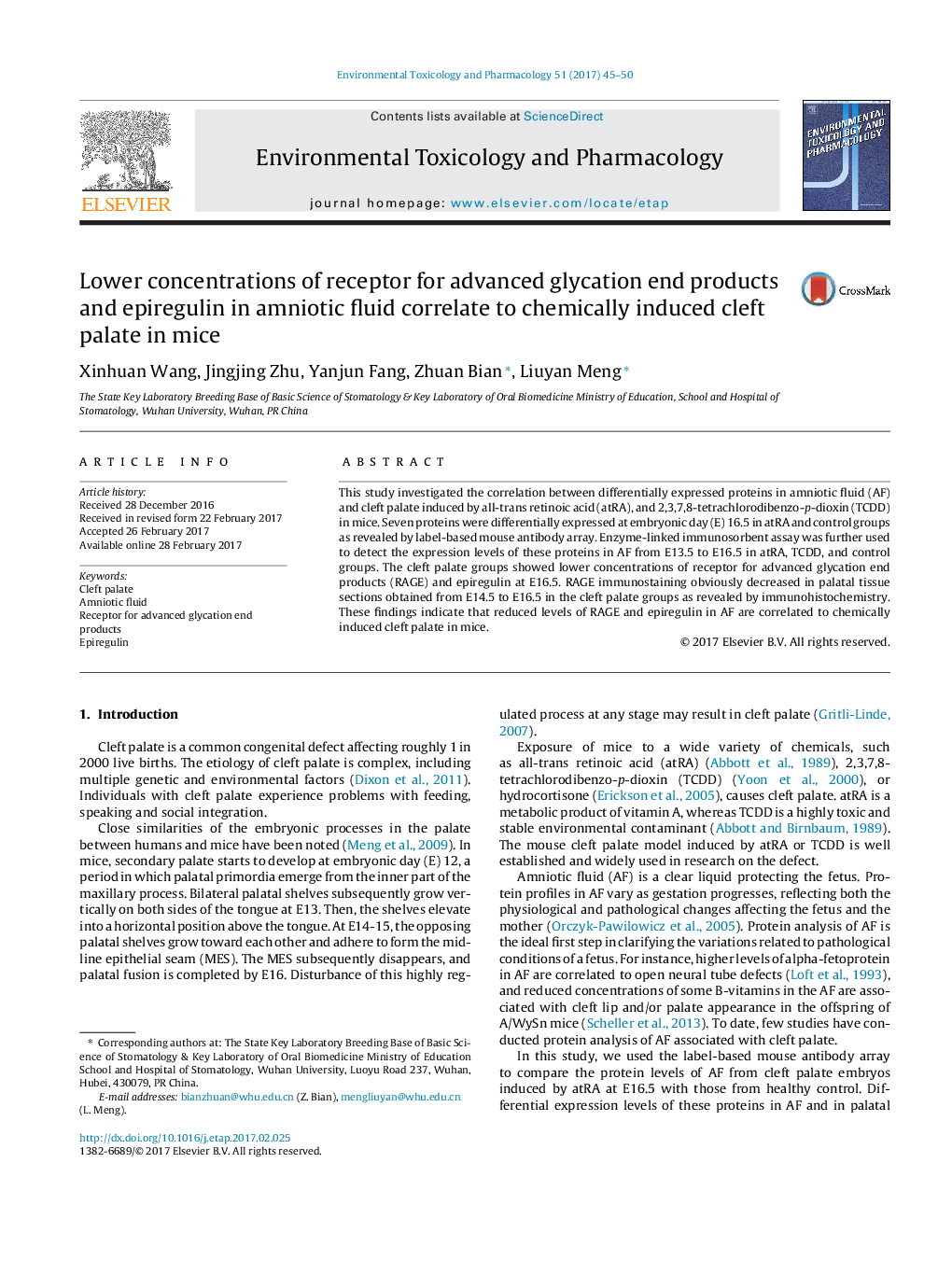| Article ID | Journal | Published Year | Pages | File Type |
|---|---|---|---|---|
| 5559807 | Environmental Toxicology and Pharmacology | 2017 | 6 Pages |
â¢The mouse cleft palate model induced by atRA or TCDD is well established.â¢Decreased RAGE and epiregulin in amniotic fluid were correlated to cleft palate.â¢The abnormal expressed RAGE was detected in palatal tissue in cleft palate groups.â¢RAGE and epiregulin in amniotic fluid may be potential biomarkers for cleft palate.
This study investigated the correlation between differentially expressed proteins in amniotic fluid (AF) and cleft palate induced by all-trans retinoic acid (atRA), and 2,3,7,8-tetrachlorodibenzo-p-dioxin (TCDD) in mice. Seven proteins were differentially expressed at embryonic day (E) 16.5 in atRA and control groups as revealed by label-based mouse antibody array. Enzyme-linked immunosorbent assay was further used to detect the expression levels of these proteins in AF from E13.5 to E16.5 in atRA, TCDD, and control groups. The cleft palate groups showed lower concentrations of receptor for advanced glycation end products (RAGE) and epiregulin at E16.5. RAGE immunostaining obviously decreased in palatal tissue sections obtained from E14.5 to E16.5 in the cleft palate groups as revealed by immunohistochemistry. These findings indicate that reduced levels of RAGE and epiregulin in AF are correlated to chemically induced cleft palate in mice.
Graphical abstractDownload high-res image (132KB)Download full-size image
